Would you vote for an insect for president?
Insects have been running the planet for over 400 million years, which is far longer than any parliamentary or presidential term can last. During this time, they have managed complex societies, built elaborate architectures, cleaned up the earth, cultivated gardens, and even—some would say—they shaped ecosystems in quiet collaboration with plants, fungi, and animals.

Can you imagine this parliament chamber buzzing with insects? Image: Adobe Stock
On a flower. Under a stone. On the surface of a pond. In the soil. Their strategies are quiet and astonishingly effective. In Switzerland alone, at least 30 000 insect species perform the labor that keeps the landscapes we love alive: pollinating alpine meadows and fruit orchards, recycling nutrients in cow pastures, patrolling forests with eloquent precision that has been developed over millions of years of evolutionary processes.
“As Gregor Samsa awoke one morning from uneasy dreams, he found himself transformed in his bed into a gigantic insect”
Franz Kafka, Metamorphosis, 1915
If we define governance not by who holds the power, but by what sustains balance and functioning, then insects may be among the most efficient governors this planet has ever known. What follows is a thought experiment rooted in biology, in which, several insects occurring in Switzerland are appointed to government departments, based solely on ecological function and behavioral sophistication. Some shimmer, some sting, some work in the darkness—but all have something to teach us.
Would you vote for an insect for president? Of course not. But by the end of this piece, you might wish one were running.
President – Formica rufa (Red Wood Ant)
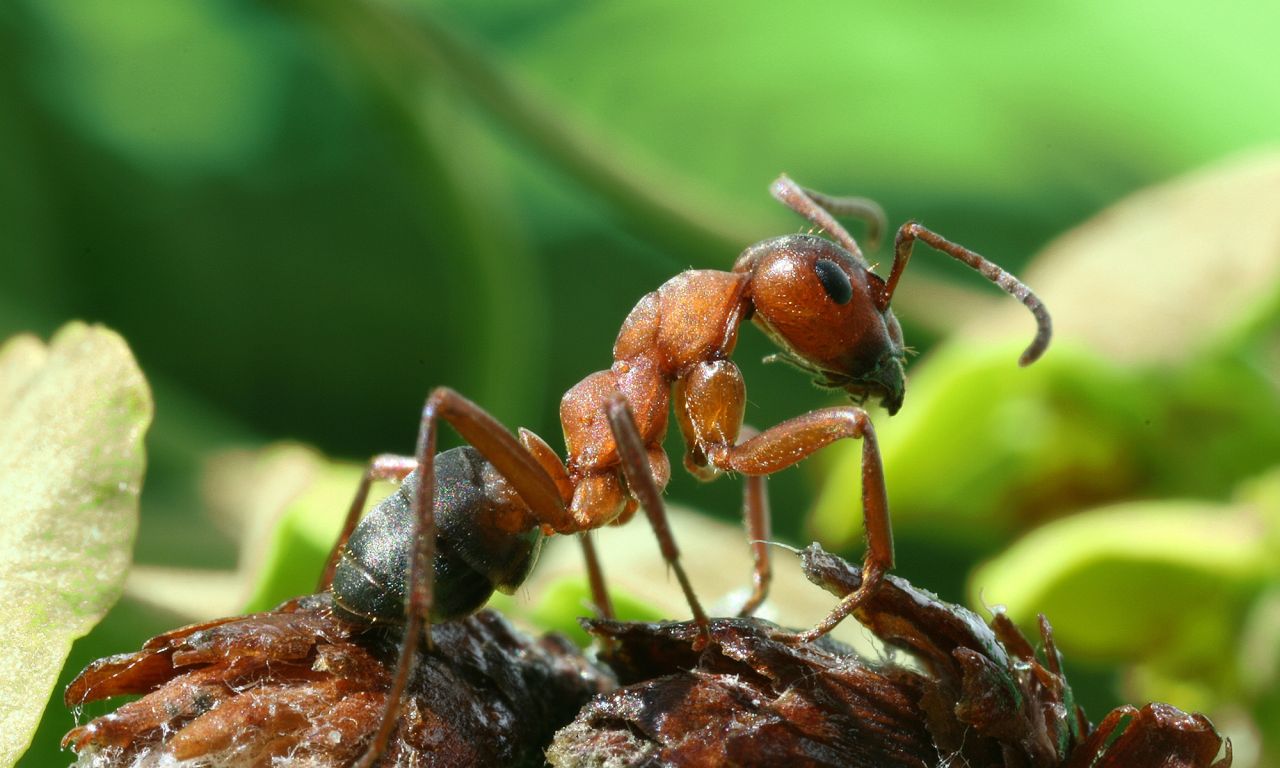
Formica rufa, also known as the red wood ant, is a large forest ant known for building dome-shaped nests and aggressively defending its territory. Image: Wikimedia Commons/Richard Bartz, CC License
Ubiquitous in Swiss forests, red wood ants are tireless builders of society. They coordinate massive colonies, manage resources, and repel intruders with formic acid diplomacy. To paraphrase Shakespeare, they are “such stuff as leaders are made on”.
Minister of Foreign Affairs – Vanessa atalanta (Red Admiral Butterfly)
A migratory butterfly that moves through Switzerland in both spring and autumn. Elegant, irresistible, cosmopolitan, and transnational at the same time—gracing gardens from Geneva to the Grisons. She embodies diplomacy in motion, bridging landscapes, pollinating across frontiers, and reminding us that beauty, like biodiversity, has no borders.
Minister of Finance – Apis mellifera (Honeybee)
The most successful treasurer one can think of, running economies based on local investment and with no external debt. They are experts in the communication-based management of resources, supplies—nectar, pollen, wax—and labor distribution.
Minister of the Environment – Geotrupes stercorarius (Dor Beetle)
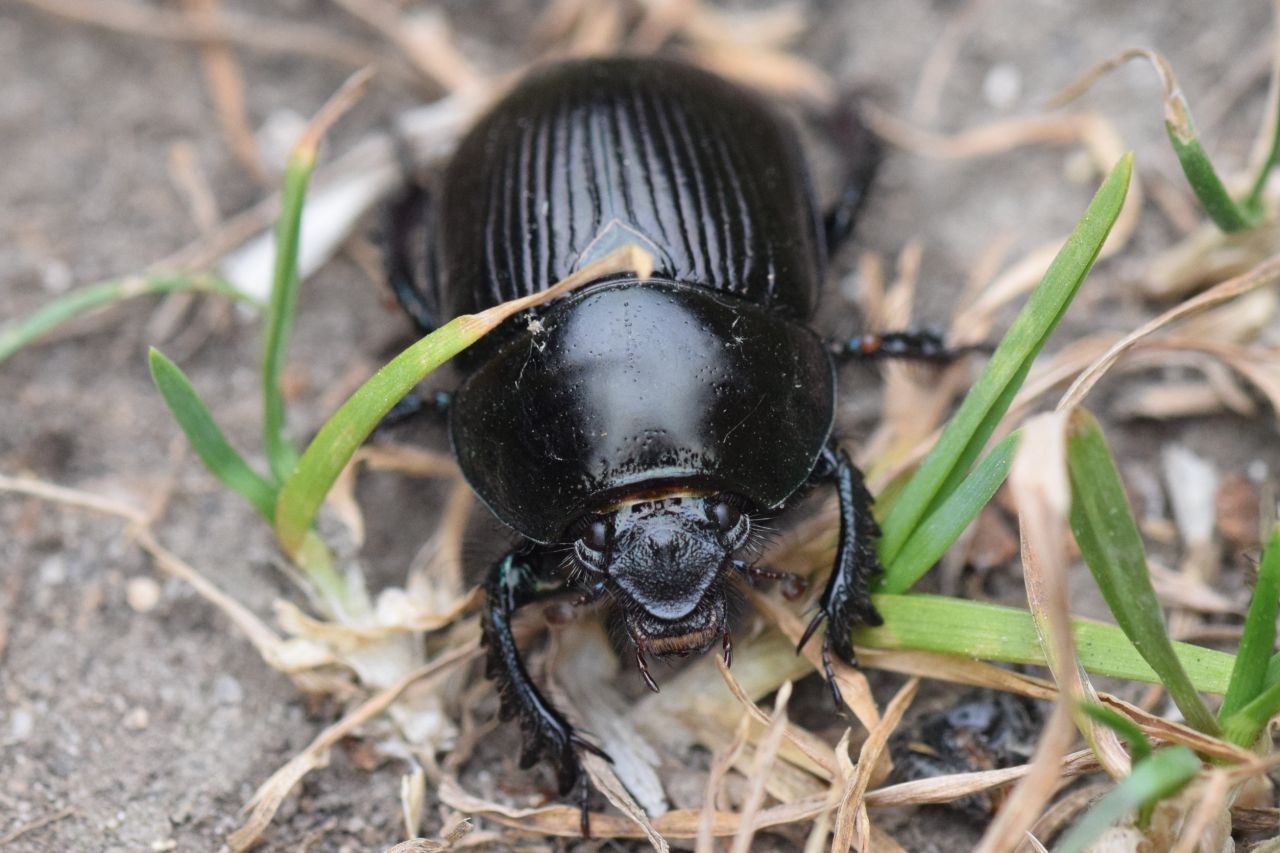
Dor beetle (Geotrupes stercorarius), East Yorkshire, UK. Image: Wikimedia Commons/Jessica Towne, CC License
This silent leader of sustainability works mostly at night, in cattle pastures and forests across the country, recycling nutrients, aerating the soil, and mastering ecological engineering and waste management.
Minister of Agriculture – Bombus lapidarius (Red-Tailed Bumblebee)
The ingenious agronomist and flower-whisperer. An important pollinator both for food crops and alpine meadows, this minister is an expert in crisis management. When resources run low, she does not negotiate for more flowers, she makes them happen. All it takes is a precise incision on the plant’s leaf, using their mouth parts, to trigger earlier flowering and secure food resources when needed. These bees just rewrite the schedule.
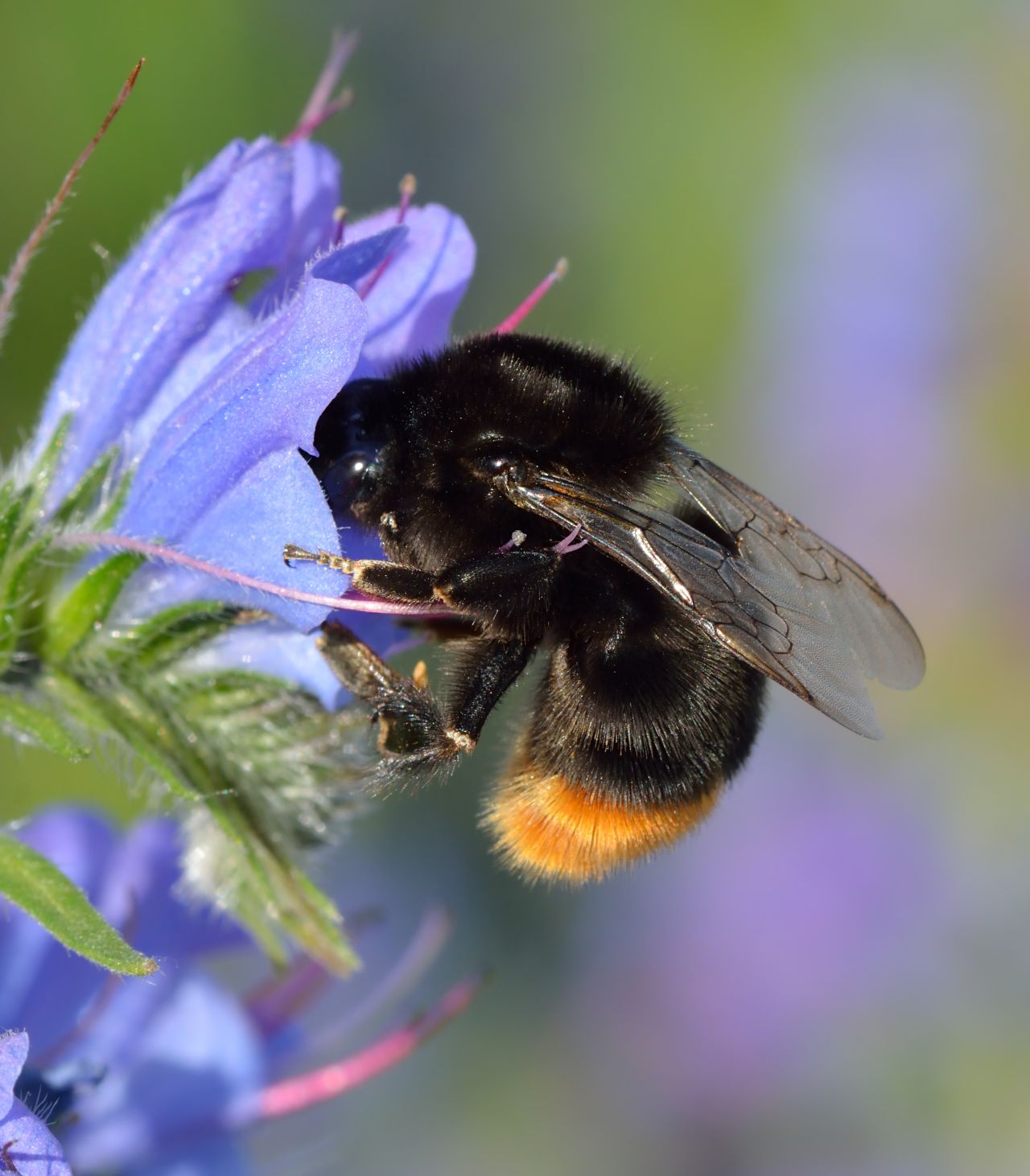
Red-tailed bumblebee (Bombus lapidarius) queen on blueweed (Echium vulgare). Keila, Northwestern Estonia. Image: Wikimedia Commons/Ivar Leidus, CC License
Minister of Justice – Calliphora vicina (Blue Bottle Fly)
The superhero of evidence-based policy. Dressed in a metallic blue uniform, this little fly is among the first surveyors of crime scenes, indicating to forensic investigators the timeline of death with remarkable precision. Unimpressed by bureaucracy, this minister is a leader in uncovering inconvenient truths.
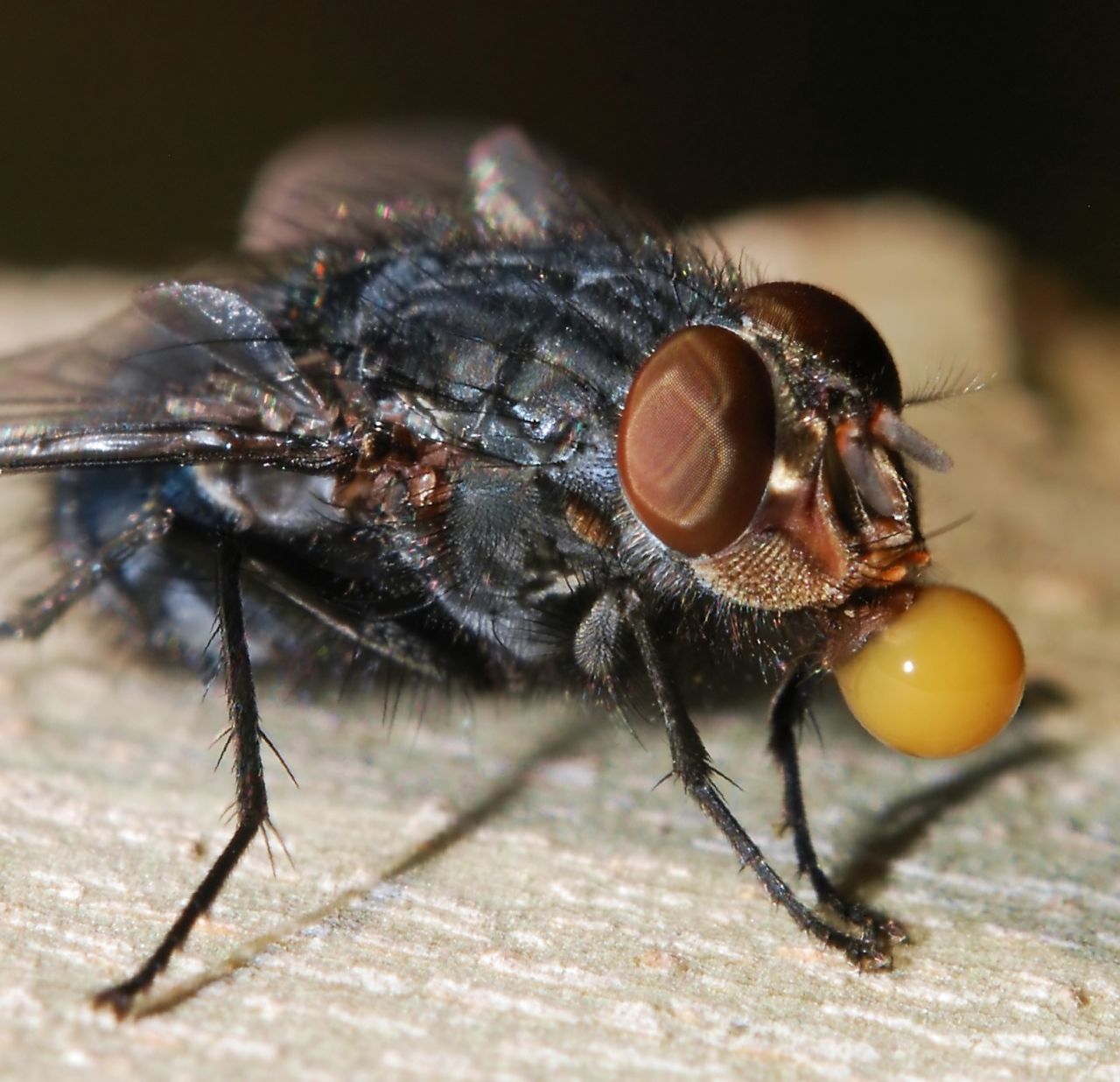
Calliphora vicina is a shiny blue blowfly that sometimes forms a yellow bubble of regurgitated liquid to aid digestion. Image: Wikimedia Commons/Alvesgaspar, CC License
Head of the Federal Intelligence Service – Phengaris arion (Large Blue Butterfly)
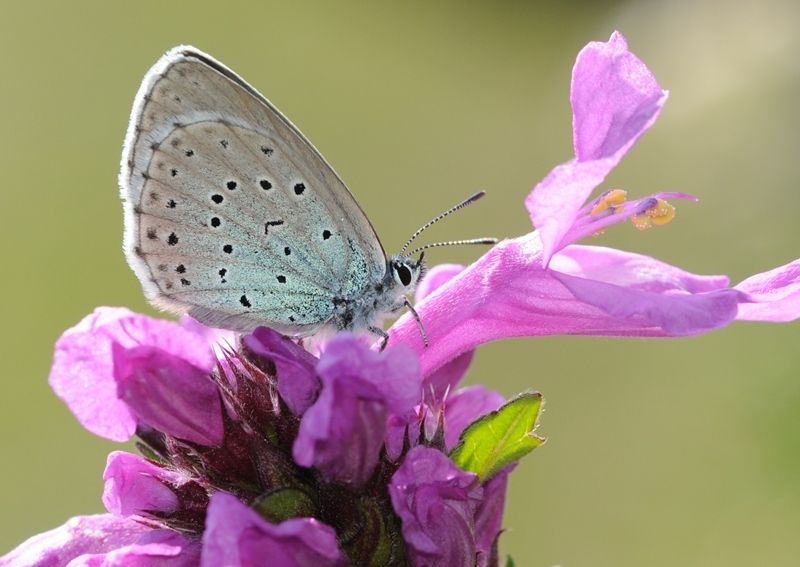
Phengaris arion, also known as the large blue butterfly, is a rare and fascinating species that relies on ants for part of its life cycle. Image: Wikimedia Commons/Zeynel Cebeci, CC License
Although humble at first glance, this is not a butterfly to underestimate. Beneath its celestial wings, this butterfly runs one of the most sophisticated undercover operations in the natural world. Its larvae begin life on thyme flowers, then drop to the ground, where they mimic the scent of Myrmica ant larvae. Carried into the ant nests, they are cared for as kin until they hatch and start consuming their hosts from within. Elegant and patient, this minister understands that power lies in timing.
Minister of Water and Climate – Baetis alpinus (Alpine Mayfly)
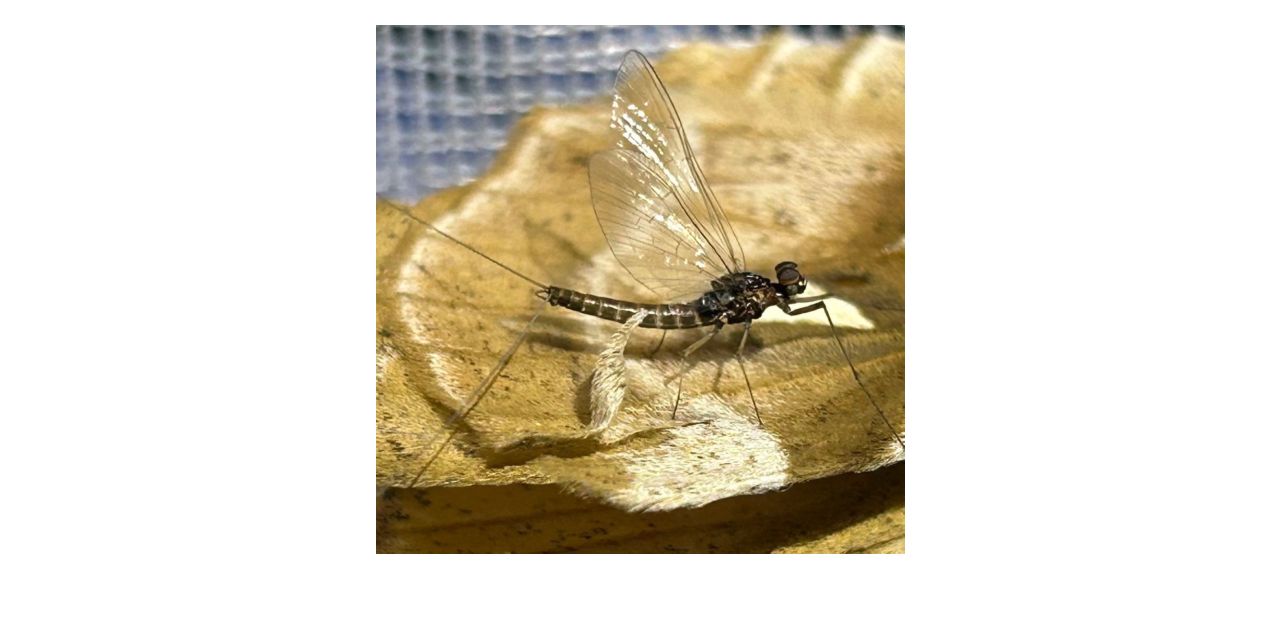
Baetis alpinus (Pictet, 1843) in Austria. Image: gbif.org/Valerie Saliger, CC License
A key bioindicator of Swiss alpine aquatic systems, it governs by presence, not by power. Although its adult life stage lasts a few days, its nymphal life in cold mountain streams plays a crucial role in nutrient cycling and sustaining aquatic food webs. The Naiads of Switzerland are sensitive to pollution and temperature changes; where they thrive, ecosystems are in balance; where they vanish, it is a warning.
Minister of Education – Polistes sp. (Paper Wasp)
With unique cognitive skills—including facial recognition—and an impressive CV including participation in state-of-the-art behavioral and neuroscientific research across Europe, this is the ideal candidate to drive innovation in education: adaptable, attentive, and committed to continuous learning, she brings a sharp mind, along with a sharp sting.
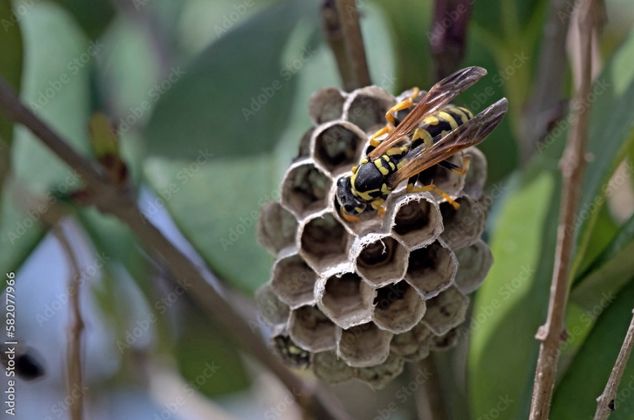
A paper wasp on its nest. Image: Adobe Stock
Minister of Culture – Osmia tergestensis (Osmia of Trieste)
A solitary bee, who when not in the field pollinating flowers, you will find tucked into rock crevices, crafting some of the most exquisite works of art an animal has ever produced. Layered with colorful flower petals, like silk origami, her brood cells could just have been lifted straight from the bell towers of a miniature Sagrada Familia. A unique visionary, guided by an inner geometry no blueprint could match, and an endangered species, according to the Swiss Red List of Bees.
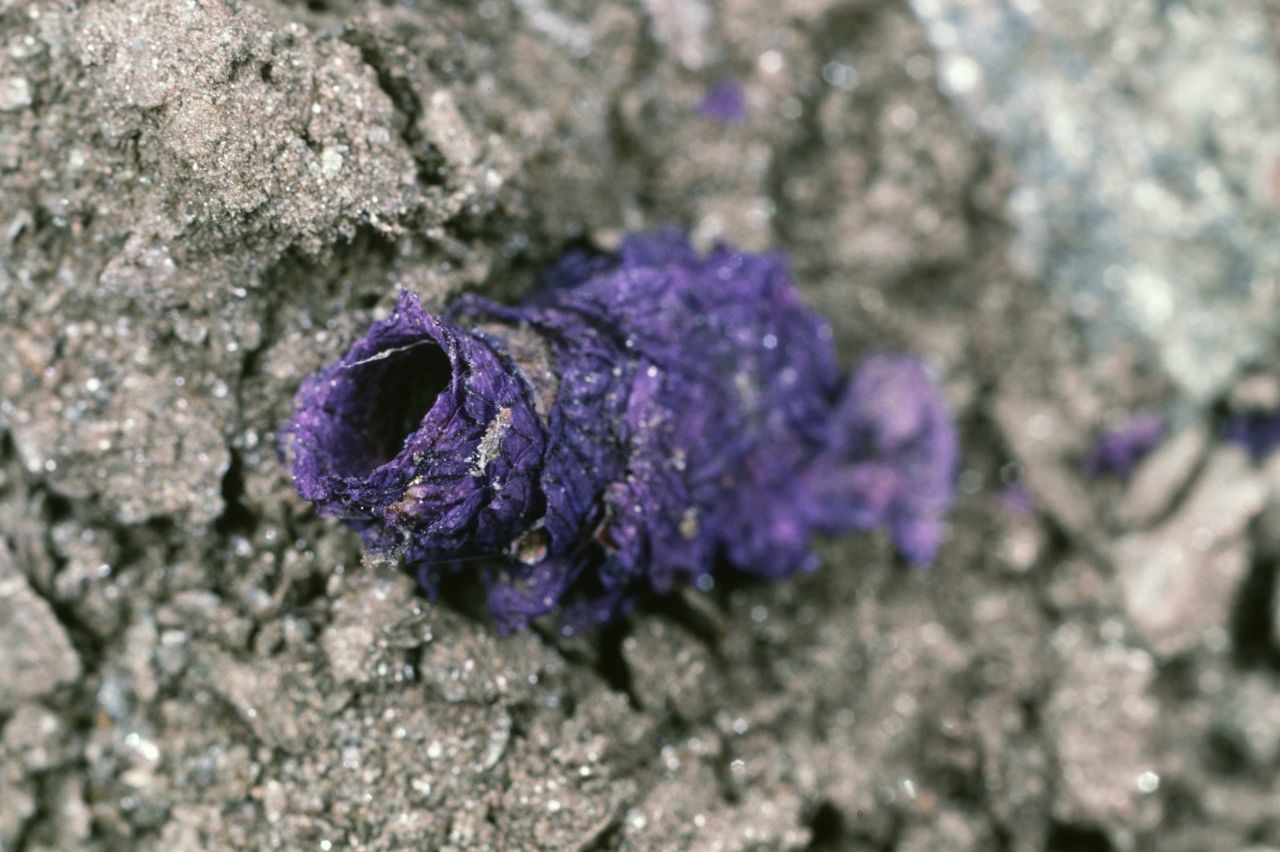
An exquisite flower-house constructed by an Osmia tergestensis. Image: Entomologie/Botanik, ETH Zürich/Albert Krebs, CC License
Minister of Defense – Brachinus crepitans (Bombardier Beetle)
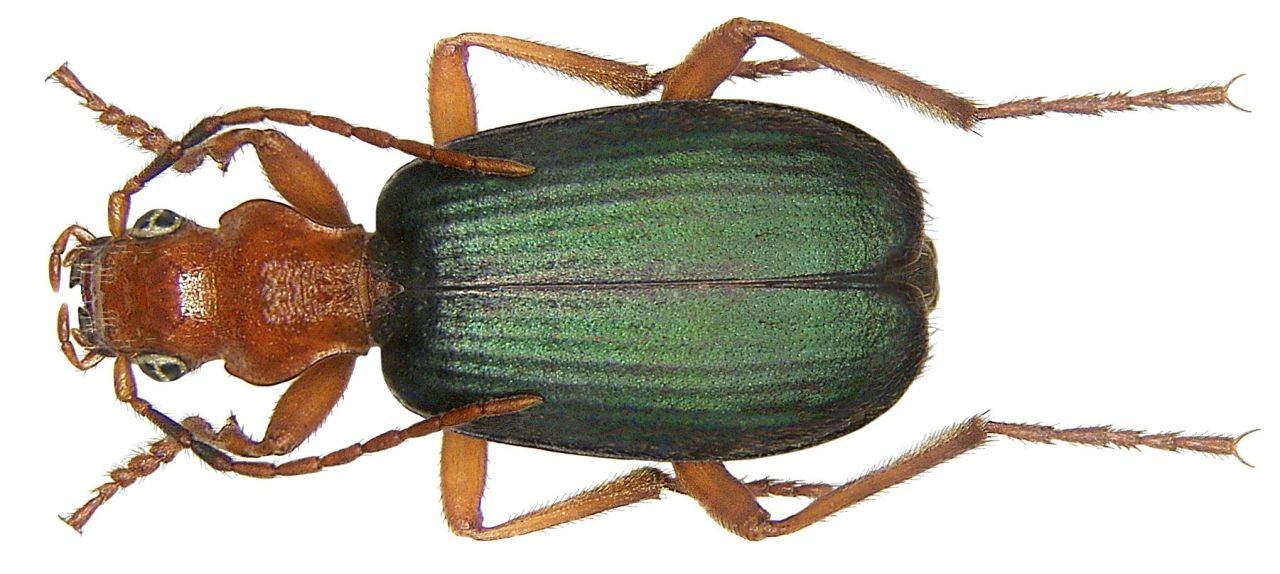
A bombardier beetle. Image: Wikimedia Commons/Udo Schmidt, CC Licence
When diplomacy fails, the bombardier beetle doesn’t escalate, it executes – with a chemical reactor in its abdomen, capable of launching bursts of boiling fluid at predators. This defense system is not brute force but biochemical precision, perfected over millions of years of evolution. This is an honorable soldier who gives a warning—a soft crackling sound—before engaging. But if ignored, the bombardier beetle doesn’t spare its firepower. No bluff, no overkill. Just the perfect dose of deterrence. Today, however, this strategist is listed as vulnerable in Switzerland: a master of defense, now in need of protection.
Minister of Health – Aedes albopictus (Tiger Mosquito)
Headquartered in Ticino, this decentralized minister reminds us that the climate crisis is not coming; it has arrived, buzzing around our ankles. Her portfolio is prevention, and her mandate is to expose the cracks in our systems. Ominous, modern, and relentless—a health minister who embodies the convergence of climate change and ecological disruption. A minister for the Anthropocene. Certainly, we do not want her in office for long. But for now, she is very much in the room.
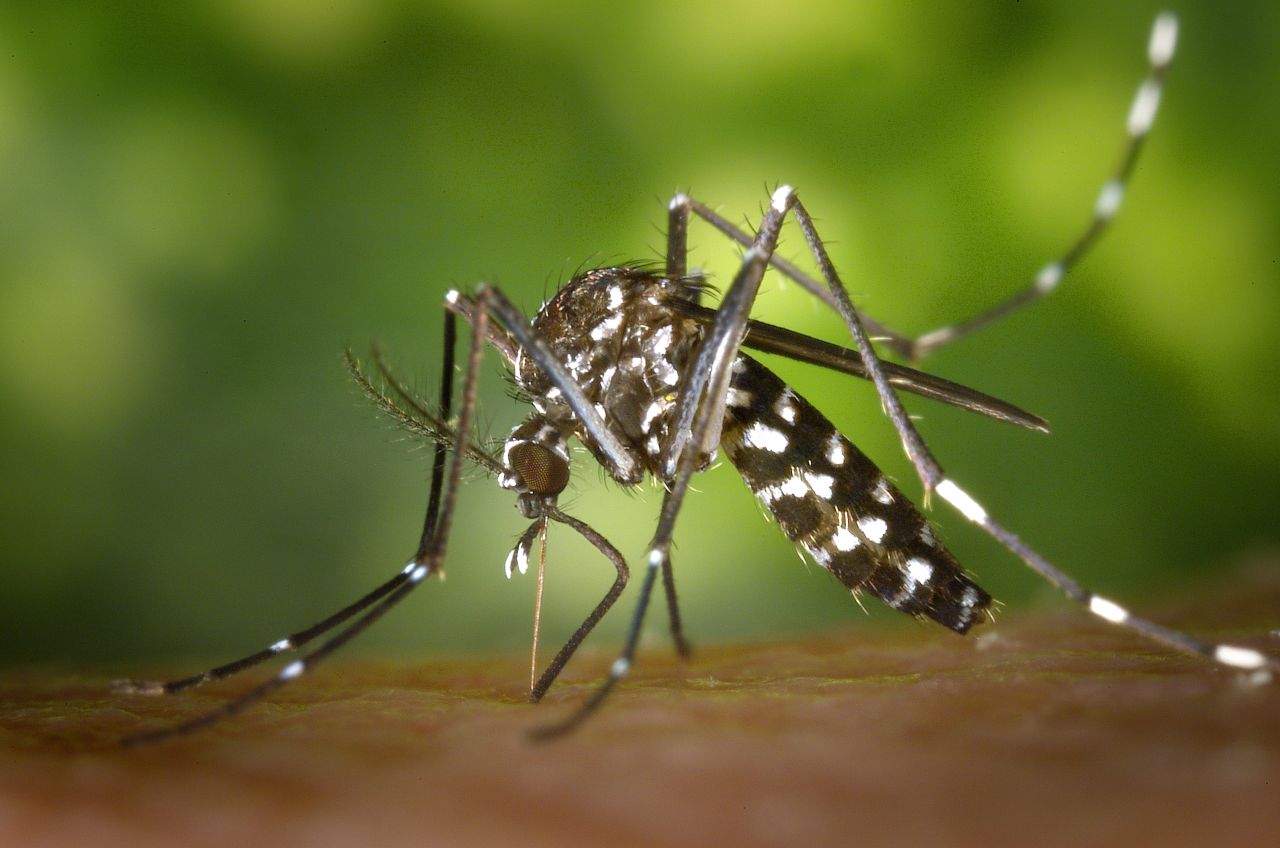
Asian tiger mosquito (Aedes albopictus). Image: Wikimedia Commons/James Gathany, CDC
Epilogue
Gregor Samsa, in Franz Kafka’s Metamorphosis, inexplicably transformed into an insect and was rejected by his family—an overreaction, perhaps, and not an unfamiliar one. Kafka refused to describe the insect, only mentioning that it was monstrous and unclean. Later illustrations depicted Samsa as a cockroach; apparently, imagination could not leave him without a form.
What if this wasn’t a tragedy? What if Samsa was a metaphor misplaced by a few decades?
Insects have long been misunderstood: too many legs, too little charm, too painful stings, too loud buzzing. And yet, they provide us with food, clean our mess, regulate our ecosystems, and manage entire landscapes without a single summit or press conference.
We will never vote them into office. But if they stopped governing, we would notice. Quickly.
References
Widmer I et al. 2021. Insektenvielfalt in der Schweiz: Bedeutung, Trends, Handlungsoptionen. Swiss Academies Reports 16 (9) https://scnat.ch/de/uuid/i/0ffab3f6-5259-51df-a67b-6a04cc8def23-Insektenvielfalt_in_der_Schweiz
Rüegg P 2020. Bumblebees speed up flowering. ETH News. Accessed 25.4.2025. https://ethz.ch/en/news-and-events/eth-news/news/2020/05/bumblebees-speed-up-flowering.html
Hodecek J et al. 2024. All insects matter: a review of 160 entomology cases from 1993 to 2007 in Switzerland—part I (Diptera), Journal of Medical Entomology 61;2:400–409. https://doi.org/10.1093/jme/tjad164
University of Michigan 2019. Paper wasps capable of behavior that resembles logical reasoning https://neurosciencenews.com/paper-wasp-logical-reasoning-13052/
Info fauna 2024. Neue Rote Liste Laufkäfer der Schweiz. Accessed 25.4.2025 https://www.infofauna.ch/de/node/2391#gsc.tab=0
Swiss Tropical and Public Health Institute. Asiatische Tigermücke. Accessed 25.4.2025 https://www.swisstph.ch/en/topics/asian-tiger-mosquito
